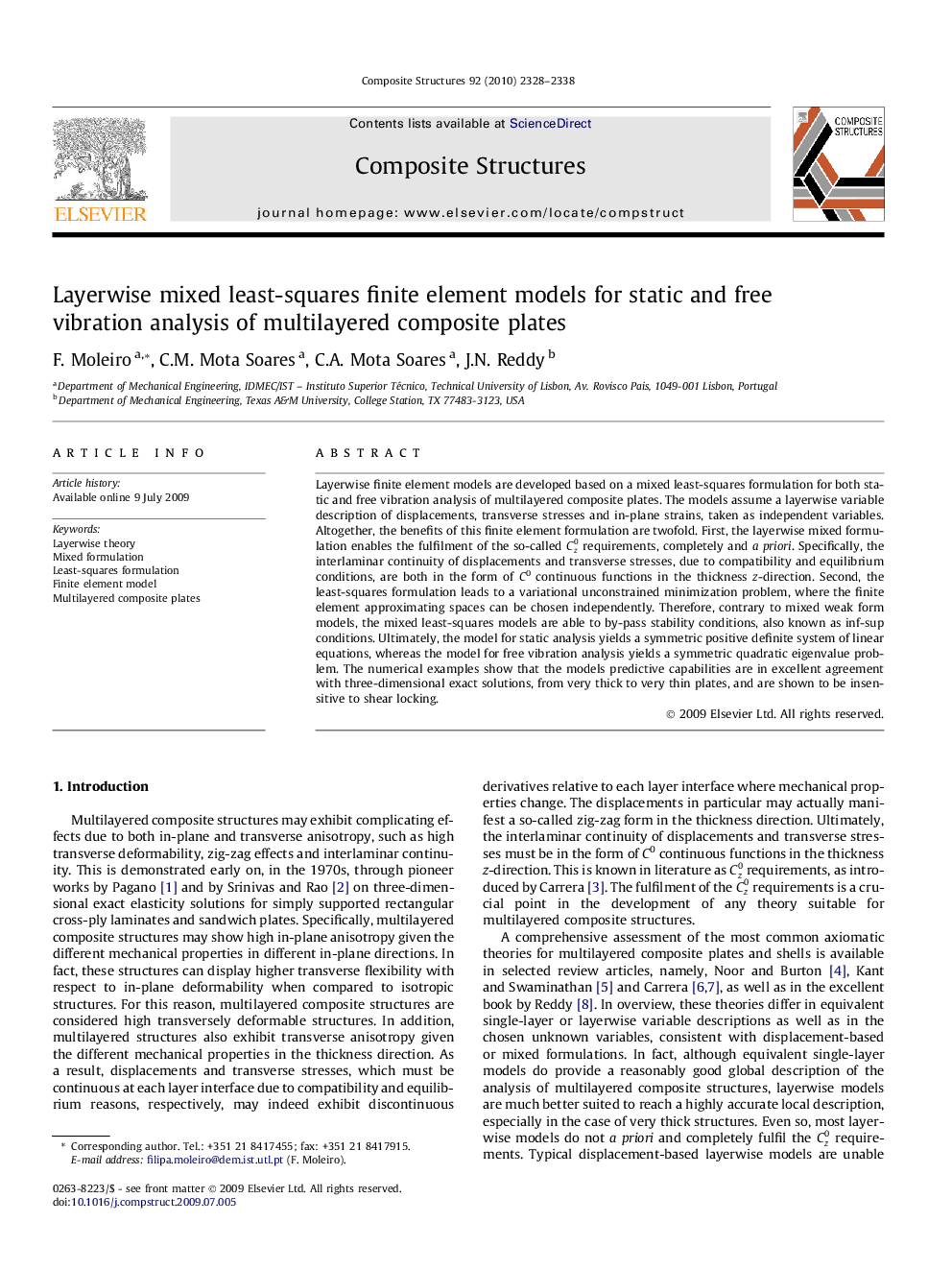| Article ID | Journal | Published Year | Pages | File Type |
|---|---|---|---|---|
| 252961 | Composite Structures | 2010 | 11 Pages |
Layerwise finite element models are developed based on a mixed least-squares formulation for both static and free vibration analysis of multilayered composite plates. The models assume a layerwise variable description of displacements, transverse stresses and in-plane strains, taken as independent variables. Altogether, the benefits of this finite element formulation are twofold. First, the layerwise mixed formulation enables the fulfilment of the so-called Cz0 requirements, completely and a priori. Specifically, the interlaminar continuity of displacements and transverse stresses, due to compatibility and equilibrium conditions, are both in the form of C0 continuous functions in the thickness z-direction. Second, the least-squares formulation leads to a variational unconstrained minimization problem, where the finite element approximating spaces can be chosen independently. Therefore, contrary to mixed weak form models, the mixed least-squares models are able to by-pass stability conditions, also known as inf-sup conditions. Ultimately, the model for static analysis yields a symmetric positive definite system of linear equations, whereas the model for free vibration analysis yields a symmetric quadratic eigenvalue problem. The numerical examples show that the models predictive capabilities are in excellent agreement with three-dimensional exact solutions, from very thick to very thin plates, and are shown to be insensitive to shear locking.
